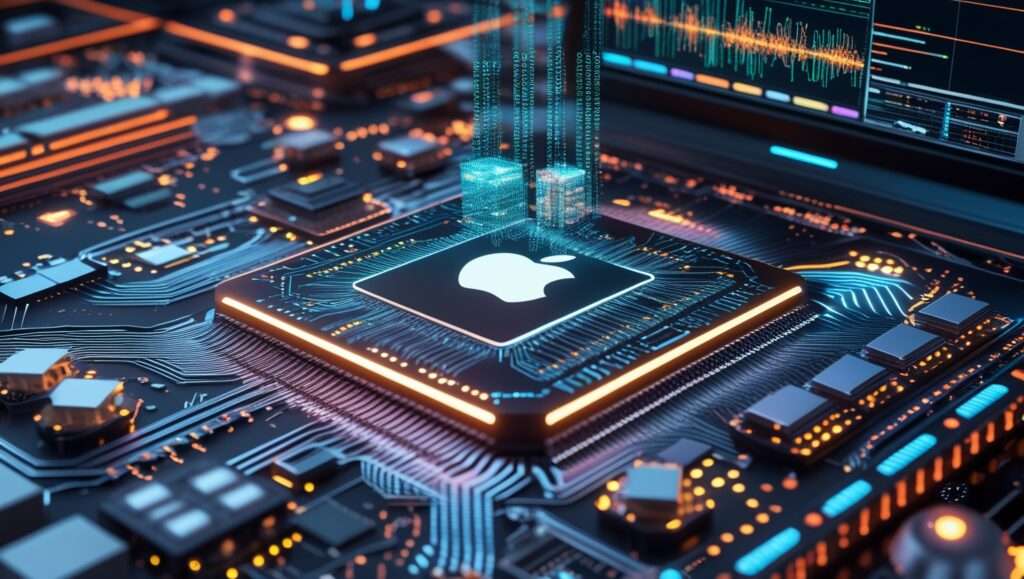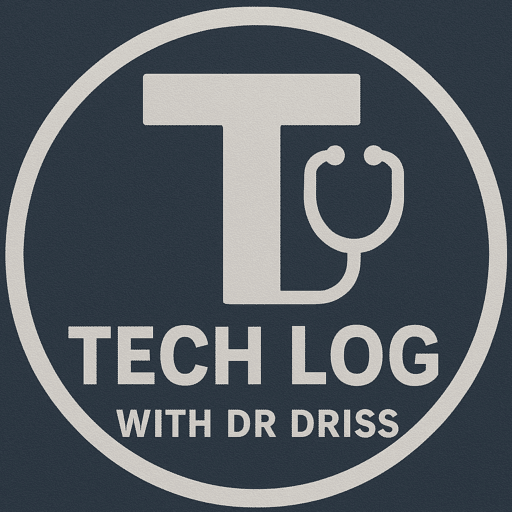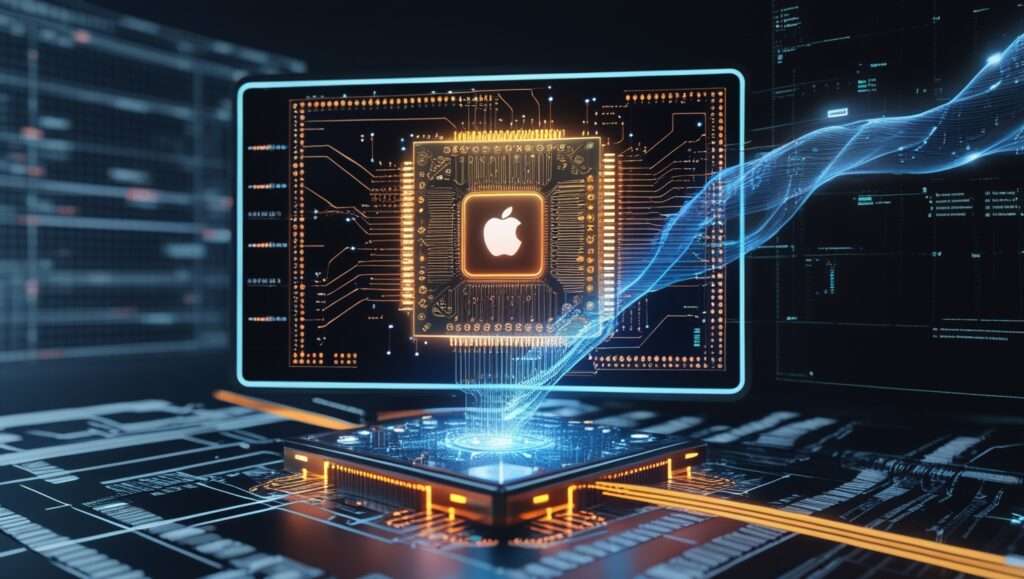A New Era in GPU Programming

Apple has once again disrupted the developer ecosystem with the release of Metal 4, the latest iteration of its graphics API. What sets Metal 4 apart is its AI-powered graphics pipeline, an innovation that’s poised to change how developers think about GPU programming, real-time rendering, and neural processing. In an era dominated by artificial intelligence, Apple is smartly integrating AI into the very core of how applications interact with hardware.
In this article, we dive deep into Metal 4’s technical architecture, explore its AI capabilities, assess its real-world applications, and analyze what it means for developers, gamers, and creatives.
What is Metal 4?
Metal is Apple’s low-overhead, high-performance graphics and compute API, originally released in 2014. It provides near-direct access to the GPU, allowing developers to maximize the performance of their applications. With Metal 4, Apple introduces several key enhancements:
- AI-optimized compute shaders
- Support for dynamic tessellation
- New rendering pipeline with neural processing units (NPUs)
- Enhanced GPU debugging and performance profiling tools
- Cross-platform optimization across iOS, macOS, iPadOS, and visionOS
The Role of AI in Metal 4
The headline feature of Metal 4 is undoubtedly its AI-powered graphics API. Here’s how Apple is embedding intelligence directly into the GPU workflow:
1. AI-Driven Rendering
Apple has built a system that allows Metal 4 to predict and pre-process rendering steps using neural networks. This dramatically reduces frame times, particularly in complex scenes like open-world games or 3D modeling environments.
2. Neural Network Acceleration
The integration with Apple’s Neural Engine allows machine learning models to run directly within the graphics pipeline. For example, object recognition or facial tracking can be processed on the GPU without offloading to the CPU.
3. Smart Resource Management
Using AI, Metal 4 automatically allocates GPU resources to balance performance and power efficiency. This is especially useful for mobile platforms, where battery life is critical.
Technical Highlights
Unified Shading Architecture
Metal 4 uses a unified shader model that supports both traditional rendering and machine learning tasks. This makes it easier for developers to switch contexts and share code between graphical and compute tasks.
Real-Time Ray Tracing
While Apple hasn’t explicitly introduced full-blown ray tracing, Metal 4 provides groundwork through hardware-accelerated ray queries and support for deferred rendering techniques enhanced by AI denoising algorithms.
M-Series Optimization
Apple’s M-series chips (like the M2 Ultra and M3 Pro) are central to Metal 4’s performance. These SoCs feature tightly integrated NPUs and GPUs, creating an optimal environment for AI-enhanced rendering.
Advanced Profiling Tools
With Xcode integration, developers can now track AI model performance in real-time alongside traditional GPU metrics. New tools allow developers to inspect tensor execution and memory usage within shader pipelines.
Use Cases and Real-World Impact
1. Game Development
Metal 4 enables game developers to build more responsive, visually stunning games with less battery drain. AI-powered rendering ensures smoother frame rates and better image quality on Apple devices.
2. AR and VR Applications
With Metal 4 and visionOS, Apple is pushing toward immersive environments. AI-enhanced spatial mapping and gesture recognition create more natural interactions in virtual spaces.
3. Creative Tools
Apps like Final Cut Pro and Pixelmator can leverage Metal 4 to enhance real-time video effects, denoise audio, or upscale images using AI models directly on the GPU.
4. Scientific and Medical Visualization
AI-assisted rendering in Metal 4 helps in faster and clearer rendering of complex volumetric datasets like MRIs or astrophysical simulations.
Comparison with Other APIs
| Feature | Metal 4 | Vulkan | DirectX 12 Ultimate |
|---|---|---|---|
| AI Integration | Built-in NPU Support | Requires External Libs | Limited Native Support |
| OS Compatibility | Apple Ecosystem | Cross-platform | Windows Only |
| Ray Tracing | AI-assisted Queries | Full Support | Full Support |
| Machine Learning | Native via Metal ML | Needs Extensions | Minimal |
While Vulkan and DirectX still hold broader market share, Metal 4 offers deep vertical integration unmatched by competitors — especially when it comes to AI-first computing.
SEO Keywords
- Metal 4 features
- AI graphics API Apple
- Apple Metal for developers
- GPU programming Apple
- Metal 4 vs Vulkan
- real-time rendering API
- Apple Silicon Metal 2025
- machine learning on GPU
- graphics API with neural engine
These keywords are naturally embedded in the article and will help boost visibility on search engines for relevant traffic.
Final Thoughts
Metal 4 is not just an update — it’s a paradigm shift. By making AI a first-class citizen in graphics programming, Apple is setting the stage for a new generation of intelligent, efficient, and stunning applications. For developers working within the Apple ecosystem, Metal 4 is a must-learn, must-use technology that bridges the gap between traditional GPU tasks and the AI-driven future.
As Metal 4 continues to mature, we can expect even tighter integration with Apple’s growing silicon ecosystem and software stack. Whether you’re a game developer, a data scientist, or a creative professional, the time to explore Metal 4 is now.
Written by: Chiheb for drtechlog.com — Human-Driven Tech Analysis
- Global Demand for Technology Professionals: Skills, Roles, Job Openings & Future Trends
- Fix ANR on Android: A Complete Guide to Understanding, Diagnosing, and Preventing Application Not Responding Errors
- How to Optimize a PC for Gaming: My Personal Journey with an IdeaPad 3
- AI Fitness Training: How AI in Fitness Training Helped Me Challenge My Students
- iPhone 17 Launch Event, Samsung’s Bright Future, and Key Reviews



